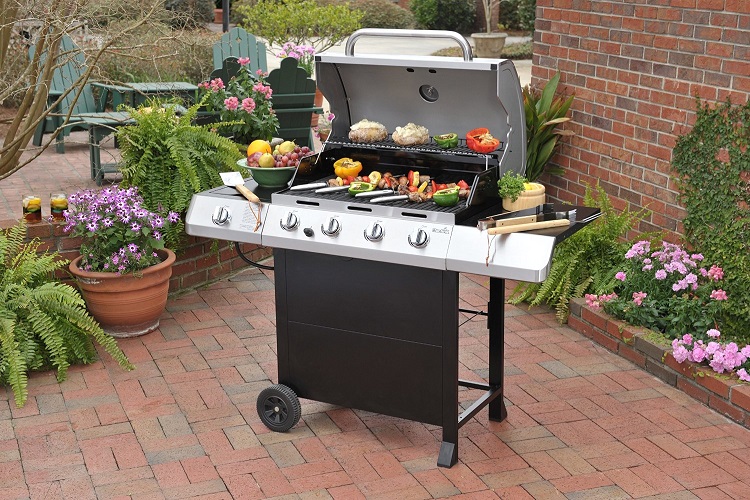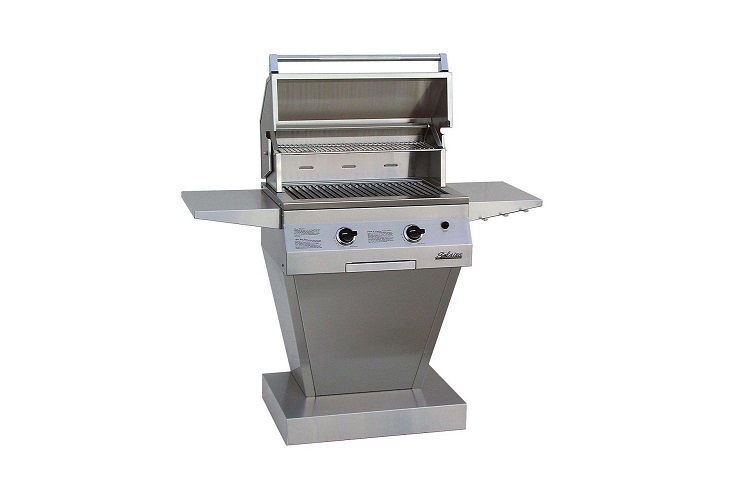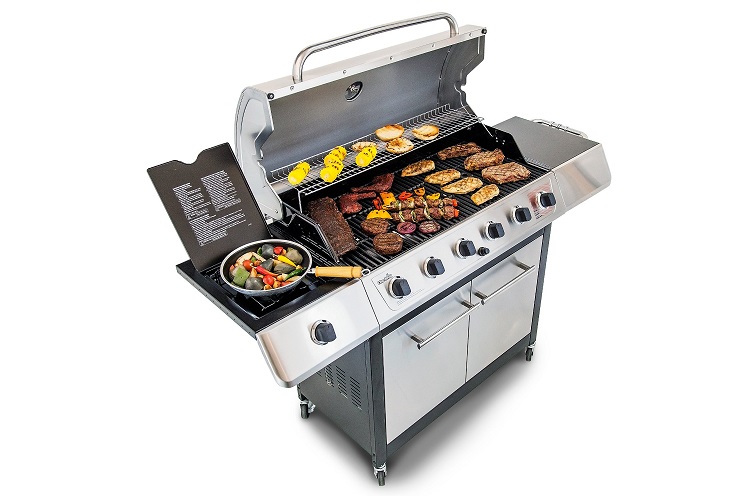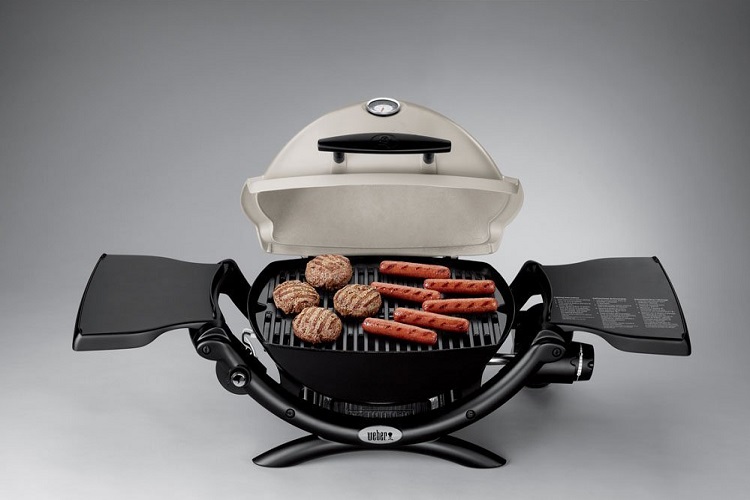 If you have been grilling for a while with charcoal and have finally decided to switch to propane, you may be wondering how to hook up the tank to the grill. It is really a simple process and before you know it, you’ll be enjoying the aroma of steaks and chickens sizzling on the grill. So, let’s get started…
If you have been grilling for a while with charcoal and have finally decided to switch to propane, you may be wondering how to hook up the tank to the grill. It is really a simple process and before you know it, you’ll be enjoying the aroma of steaks and chickens sizzling on the grill. So, let’s get started…
View the best propane gas grills on the market here
The first thing you want to do is to make sure the grill is spotless. Do you really want to cook your burger on a dirty grate? Yuck! Take off the cover and scrub that grill clean. Use hot, soapy water to scrub and then rinse it clean. Now you are ready to hook up the propane tank. Every grill is different so look through the user manual that came with your grill to view the instructions for your specific model. Here are a few tips that will most likely work well for your grill:
- You need to attach the tank to the grill first and then hook up the gas.
- Before you work with the propane tank, you need to make sure the valve is completely closed. Turn the knob clockwise until you can’t turn it anymore.
- Also, make sure the grill is turned off by checking the knobs on the front of the grill.
- Check the seal on the tank for any cracks or damage. If there is something wrong with your propane tank, do not use it. Return it to the store where you purchased it and get a new one.
- Remove the seal from the gas tank using the cap and strap included with the valve.
- Use one hand to hold the regulator and then inset the nipple into the valve with the other hand.
- Use your fingers to tighten the coupling nut to the tank while making sure the regulator is aligned. Never use tools for this and always make sure the connection is not cross-threaded (by keeping the regulator aligned).
- Tighten the coupling nut until it will not turn any more.
 Each time you go to use your grill, inspect the LP tank for flaws. Take a close look at the valve seal and make sure there are no cracks, wear or weakening. A crack could result in a gas leak which might lead to fire or explosion. Always check the seal before you use the grill and whenever you refill the tank. If you haven’t used the grill in more than 60 days, also give your tank a check up.
Each time you go to use your grill, inspect the LP tank for flaws. Take a close look at the valve seal and make sure there are no cracks, wear or weakening. A crack could result in a gas leak which might lead to fire or explosion. Always check the seal before you use the grill and whenever you refill the tank. If you haven’t used the grill in more than 60 days, also give your tank a check up.
Table of Contents
My grill isn’t preheating! What do I do?
If your grill isn’t preheating, you can try to close the lid and turn the grill on at a low temperature. For the next 20 minutes, slowly increase the temperate.
What to do if your grill isn’t heating properly?
 A gas grill will usually heat up fairly evenly, however, there may be cooler or hotter areas in the grill. You don’t need to worry about that. You need to start worrying if your grill isn’t heating at all or is over-heating.
A gas grill will usually heat up fairly evenly, however, there may be cooler or hotter areas in the grill. You don’t need to worry about that. You need to start worrying if your grill isn’t heating at all or is over-heating.
When your grill heats up unevenly, you can try cleaning the grill again. Sometimes this will help unclog pipes and other parts of the grill that may be blocking the heat. If a good cleaning doesn’t help, then you may need to replace the defective parts.
If your grill won’t light up at all and you are sure the tank is hooked up correctly, then the ignition switch may need to be replaced.
Are yellow flames normal on a gas grill?
The flames on a gas grill should be blue and not yellow. If your gas grill emits yellow flames, then your grill has low gas pressure. It is easy to fix with a few adjustments:
- Make sure the grill is turned off and open the lid
- Close the propane tank by turning the knob on top of the tank
- Disconnect the tank regulator
- Count to 30 and then reconnect the regulator
- Slowly open the propane tank by turning the knob on top of the tank
- Turn on the grill and light it with the ignition switch/button
Prevent this from happening again by turning off the control knobs before turning the valve on the tank. If the flames are still yellow, then you should replace the regulator.
Other things to consider:
A drop in the size of the flames on your grill may mean that you are out of gas or it could mean that the excess flow valve has been tripped. To test it out, turn off the grill and then turn off the tank. Wait 30 seconds and then turn it back on slowly. Light the grill and see if there is a different. If there is no changes after trying for three times, then you are out of gas.
However, if you know you have a full tank of gas and you are experiencing this problem, they you might need to replace the regulator.
Click here to see more propane grills on Amazon.com
The above tips will allow you to have a successful backyard barbecue using your propane grill. If you experience any problems that you can’t fix, then don’t be afraid to call in an expert. They can safely diagnose the problem and fix your grill so all you have to worry about is choosing what type of meat you want to grill.



